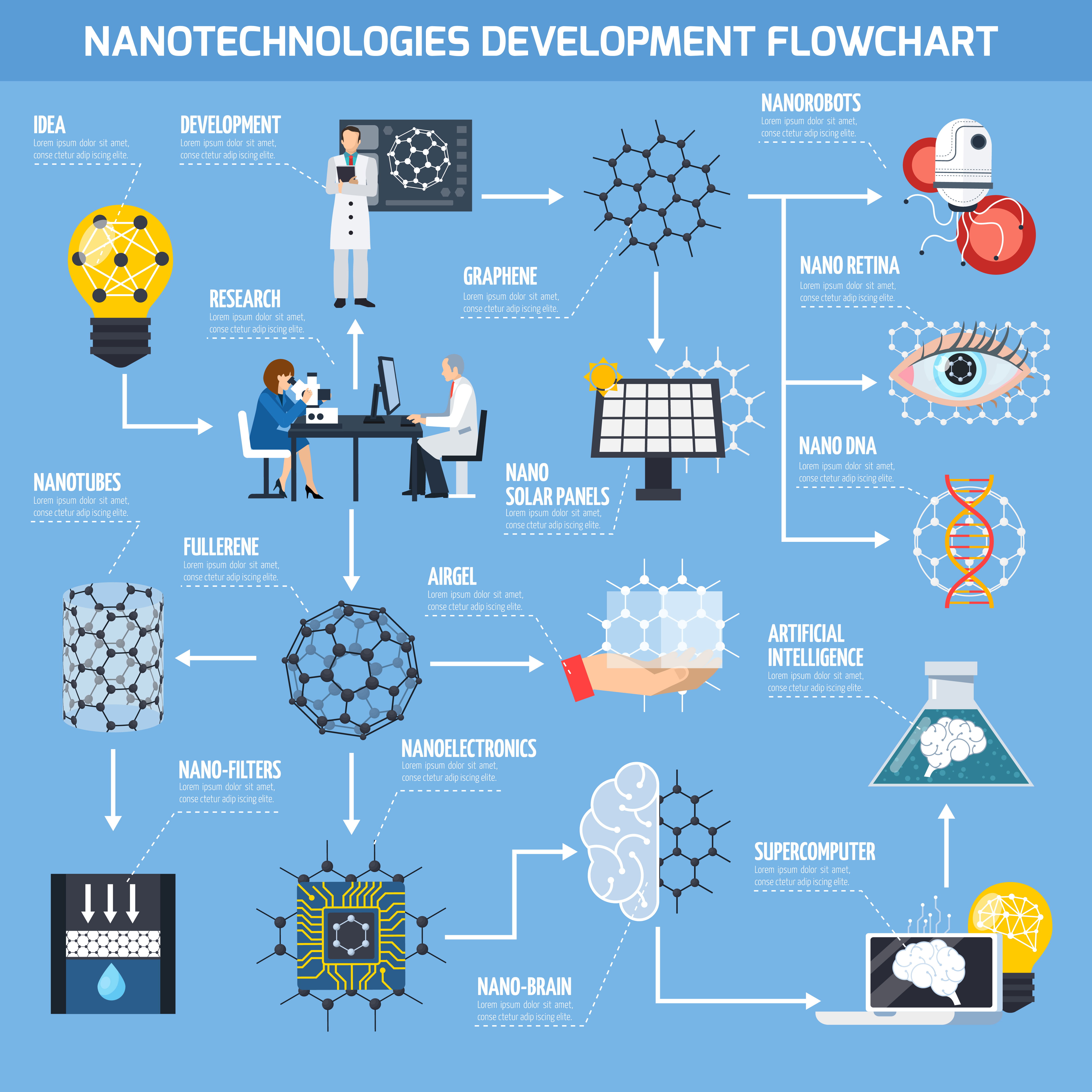Nanotechnology Applications: Nanotech in Medicine, Electronics, and More
Introduction to Nanotechnology Applications
Nanotechnology manipulates matter at the 1–100 nanometer scale, unlocking unique properties like enhanced strength or conductivity. In 2025, the field is booming, with the global market projected to reach $209.89 billion, growing at 10.4% CAGR through 2029. Applications span medicine (e.g., precise drug delivery), electronics (e.g., smaller transistors), energy (e.g., efficient solar cells), and the environment (e.g., water purification). Driven by AI integration and sustainable materials, nanotech addresses global challenges like healthcare access and climate change. This article highlights key areas, recent innovations, and future potential.
Nanotech in Medicine: Precision Healing at the Molecular Level
Nanomedicine uses nanoscale tools for diagnostics, therapy, and monitoring, revolutionizing treatments by targeting cells precisely and minimizing side effects. In 2025, nanoparticle-based systems dominate, with applications in cancer therapy, vaccines, and regenerative medicine.
Key Applications
- Targeted Drug Delivery: Nanoparticles (like liposomes, which are 50–200 nm in size) carry drugs and release This boosts efficacy by 50–70% while reducing toxicity. Example: PDLA nanoparticles for controlled release in neurodegenerative diseases.
- Biosensors and Diagnostics: Nanosensors detect biomarkers (e.g., cancer proteins) at attomolar levels, enabling early detection. In 2025, wearable nanosensors monitor glucose for diabetes management.
- Regenerative Medicine: Nanofibers (e.g., from PHA polymers) scaffold tissue growth and are used in implants that adapt to inflammation. Nanobots for precision surgery are in trials, navigating blood vessels for minimally invasive procedures.
- Vaccines and Gene Therapy: Lipid nanoparticles deliver mRNA, as in COVID vaccines; 2025 sees expansions to HIV and cancer immunotherapies.
2025 Innovations
- AI-Nanotech Hybrids: Frontier research integrates AI with nanosensors for real-time cancer monitoring, enhancing sensitivity 10-fold.
- Extracellular Vesicles: Spinning bioreactors boost vesicle yield for affordable targeted therapies.
| Application | Nanotech Tool | Benefit | Example Product/Research |
|---|---|---|---|
| Drug Delivery | Liposomes | 50% Reduced Side Effects | PDLA for Brain Tumors |
| Diagnostics | Quantum Dots | Early Detection | Wearable Glucose Sensors |
| Implants | Nanocoatings | Adaptive Response | Orthopedic Nanostents |
Challenges: Biocompatibility and toxicity; solutions include FDA-approved coatings.
Nanotech in Electronics: Miniaturization and Efficiency
Nanoelectronics leverages nanoscale components for faster, smaller devices, powering AI, quantum computing, and IoT. The sector drives 40% of nanotech growth, with transistors shrinking to 2 nm by 2025.
Key Applications
- Transistors and Chips: Carbon nanotubes (CNTs) replace silicon, enabling 100x faster processing with lower power. Example: IBM's 2 nm chip uses nanosheet tech.
- Quantum Dots: Semiconductor nanocrystals (2–10 nm) enable vibrant displays and qubits for quantum computers. Samsung's QD-OLED TVs hit 99% DCI-P3 color gamut.
- Flexible Electronics: Graphene and nanowires create bendable screens and e-skin for wearables.
- Sensors: Nano-enhanced sensors detect gases or biometrics at ppb levels, vital for smart homes.
2025 Innovations
- Wiggling Atoms: UNSW's atomic manipulation doubles transistor efficiency.
- Molecular Electronics: CMOS chips with nanopores for ultra-dense memory.
| Application | Nanotech Tool | Benefit | Example Product/Research |
|---|---|---|---|
| Transistors | Carbon Nanotubes | 100x Speed | IBM 2 nm Chip |
| Displays | Quantum Dots | 99% Color Accuracy | Samsung QD-OLED |
| Sensors | Nanowires | ppb Detection | Smart Home Gas Sensors |
Challenges: Heat dissipation, addressed by nanomaterials like graphene.

Nanotech in Energy: Sustainable Power Solutions
Nanotech enhances energy efficiency, storage, and renewables, supporting net-zero goals. The energy nanotech market hits $11.61 billion in 2025.
Key Applications
- Solar Cells: Nano-enhanced perovskites achieve 25% efficiency, doubling traditional silicon.
- Batteries: Silicon nanowires boost lithium-ion capacity 10x for EVs.
- Fuel Cells: Nanocatalysts reduce platinum use by 90%.
- Energy Harvesting: Nanogenerators convert motion to power wearables.
2025 Innovations
- Thermoelectric Nanomaterials: Convert waste heat to electricity, cutting emissions 20%.
| Application | Nanotech Tool | Benefit | Example Product/Research |
|---|---|---|---|
| Solar Cells | Perovskites | 25% Efficiency | Nano-Enhanced Panels |
| Batteries | Silicon Nanowires | 10x Capacity | EV Lithium-Ion |
| Harvesting | Nanogenerators | Motion-to-Power | Wearable Chargers |
Nanotech in Environment and Other Fields
- Water Purification: Nanomembranes filter contaminants at 99.9% efficiency.
- Agriculture: Nano-fertilizers boost yields 20% with less runoff.
- Materials: Self-healing nanocomposites extend product life.
Challenges and Ethical Considerations
- Toxicity: Nanoparticle accumulation risks; regulated by FDA/EPA.
- Equity: Access gaps in developing regions; solutions via open-source nanotech.
- Environment: Production energy; green synthesis (e.g., bacteria) mitigates.
Future Outlook for 2025 and Beyond
By 2029, nanotech could add $3.5 trillion to the global economy, per McKinsey. Conferences like Nano 2026 highlight AI-nanotech hybrids. X discussions buzz about nanobots in medicine and quantum electronics.
Conclusion
Nanotechnology's 2025 applications—from PDLA drug carriers in medicine to wiggling-atom transistors in electronics—promise efficiency and sustainability. As markets grow and innovations like PHA nanomaterials emerge, nanotech reshapes industries. For enthusiasts, explore resources like StartUs Insights or Nano 2026. Embrace this nanoscale revolution responsibly for a brighter future.